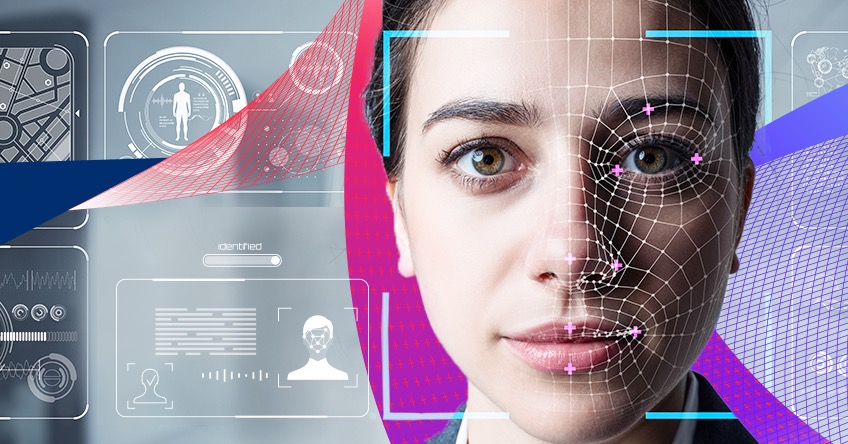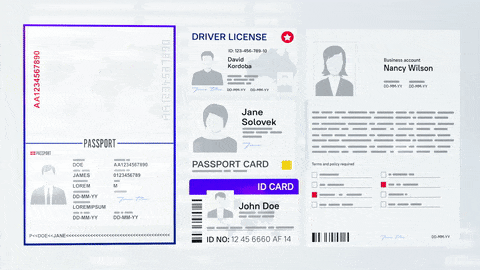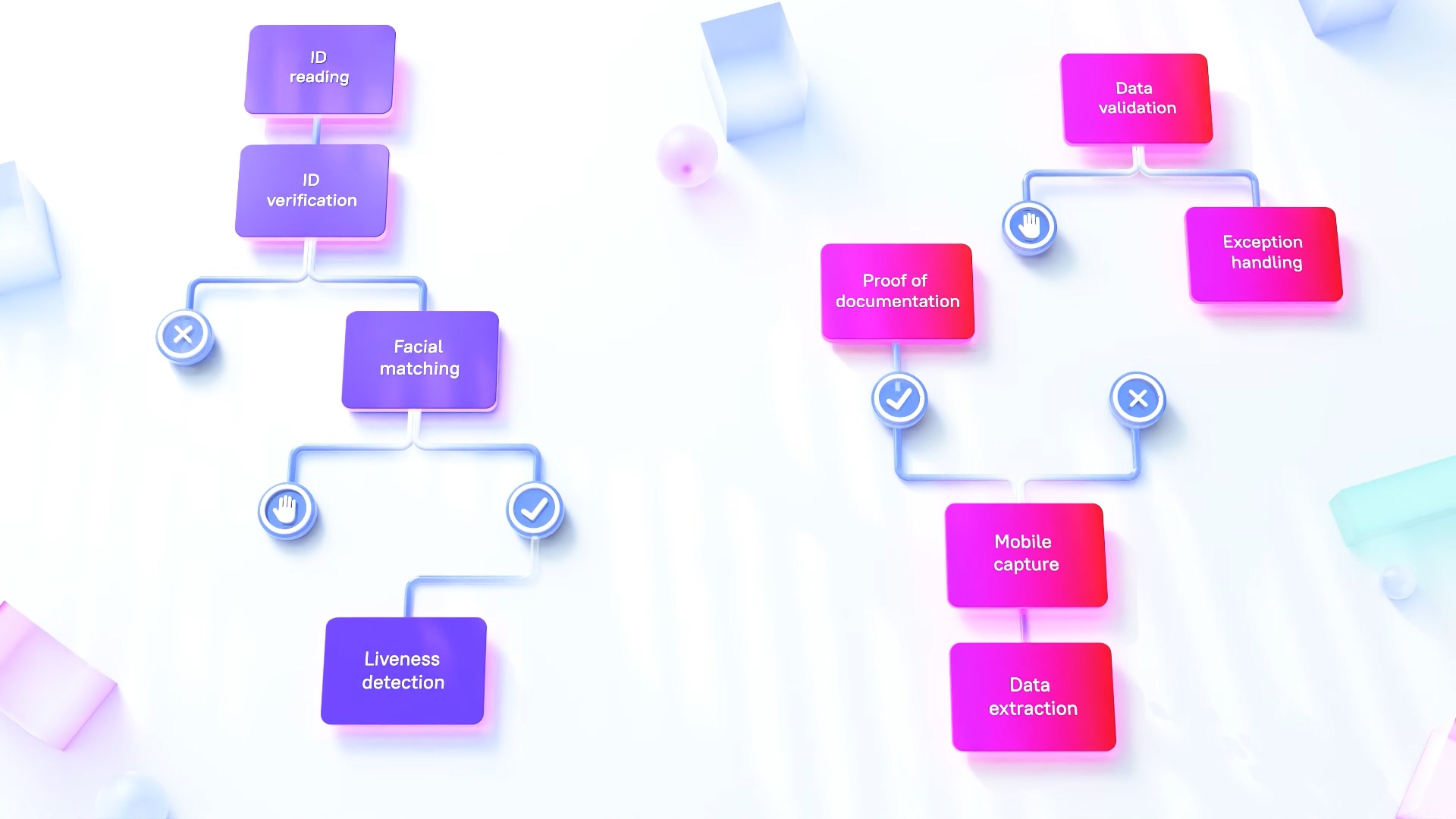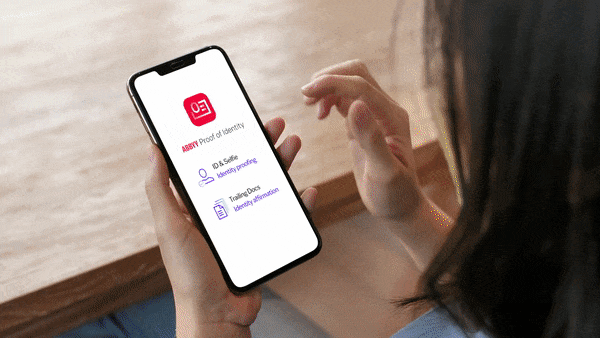HeroSecondaryQuote
JSS component is missing React implementation. See the developer console for more information.

When the COVID-19 pandemic led to widespread lockdowns, it accelerated a trend that had been transforming business for decades: the shift of services from in-person to online. As more and more consumers turned to the web to conduct business using various devices, identity proofing in the process of fraud prevention became increasingly critical. In 2021 alone, more than 2.8 million fraud reports were filed with the FTC, and bank transactions accounted for the highest aggregate losses reported ($756 million).
Join our webinar on November 10, 2022, to learn more about ABBYY Proof of Identity.
At the same time, consumer trust has become a critical factor in building brand loyalty and customer retention, particularly in industries that require handling sensitive information. In a 2021 survey, 38.8 percent of consumers with higher-than-average levels of digital trust said they would open their next account with their current bank, compared to just 21.3 percent of respondents with lower-than-average trust levels.
One of the critical aspects of online services involving sensitive data—such as banking, healthcare, and government—is identity proofing, using uploaded documents to verify a user’s identity. This requires not only intake of identifying documents (such as a driver’s license) but also verifying the validity of these documents and confirming that they reflect the user’s identity. Gartner predicts that by 2023, 85 percent of organizations will be using document-centric identity proofing as part of their onboarding processes.
What is identity proofing?
Identity proofing is the process of confirming that a user is who they say they are. Accomplishing this requires matching a user’s claimed identity—what the National Institute of Standards and Technology (NIST) defines as “an applicant’s declaration of unvalidated and unverified personal attributes”—with their actual identity, as proven by data and documentation.

A common misperception of identity proofing equates it with another common online security concept, identity authentication. Authentication is the use of a combination of credentials—generally a username and password—to gain access to a resource. However, before users can be assigned credentials, especially for access to sensitive resources, they must first verify who they are through identity proofing.
How does identity proofing work?
The NIST identifies three steps that make up the identity proofing process:
- Resolution: Collect the individual’s personal information (name, address, date of birth, etc.) and identity evidence (such as a passport or driver’s license).
- Validation: Determine the authenticity, validity, and accuracy of the information and documentation provided.
- Verification: Confirm and establish a link between the claimed identity and the actual identity of the subject presenting the evidence.

Manual approaches to this detailed process can be time-consuming, tedious, and at high risk for error. Fortunately, today’s identity proofing systems can leverage automation and AI to carry out each step without the need for human intervention in most cases.
What’s the difference between identity proofing and identity affirmation … and why do we need both?
While identity proofing is a vital capability for organizations looking to secure their processes, there is more to the story. Sophisticated scammers are capable of creating realistic documentation that may even trick some verification systems, even though the human being they describe is purely fictional. This is why businesses need identity affirmation alongside traditional identity proofing.
Identity affirmation, according to Gartner, “describes capabilities that either assess solely whether the real-world identity exists or can provide supporting risk or trust signals to an identity claim.” Successful identity affirmation requires access to multiple outside data sources. For example, in a low-confidence, high-risk transaction, a business will want to verify an address via a utility bill, birth certificate, income statement, and credit bureau data to verify that this data corresponds to an actual human being.
When businesses leverage identity proofing and identity affirmation in tandem, they can enjoy a high level of confidence that the users they interact with really are who they say they are.
Is there a “one-stop shop” for identity proofing and affirmation capabilities?
While many vendors offer identity proofing and affirmation tools, few actually deliver the full slate of required functions. When ABBYY developers designed our solution, we made sure to include a full slate of capabilities for you, including
- ID reading, including mobile capture and document classification
- ID verification, including image-tampering fraud detection
- Facial matching based on a top-rated NIST-rated algorithm with extremely low bias
- Trailing documents (document-centric identity affirmation)
- Exception handling (optional human auditing of certain transactions)
- Process intelligence and mining to identify opportunities for process improvement
What are common use cases for identity proofing?
While fraud can happen in nearly any industry, sectors with a high frequency of high-risk transactions stand to derive the greatest benefit from AI-driven identity proofing solutions. Here’s a brief sampling of how businesses in various industries are putting identity proofing to use:
Banking and financial services
- Anti-Money Laundering (AML) and Know Your Customer (KYC) regulation compliance
- Customer onboarding and new account opening
- Loan and mortgage applications
Healthcare
- Confirming patient identity for HIPAA requirements
- Distributing prescription medications
Insurance
- Claims processing
Telecom
- Point-of-sale verification to avoid subscription fraud
Government
- New driver’s license/ID applications
- License/ID renewals
- Title-related services
- Compliance with Real ID requirements

Over the course of just a few years, the volume and complexity of online transactions has grown exponentially, both for better and for worse. Fortunately, identity proofing and affirmation solutions can help businesses continue to meet consumers’ demands for efficient, convenient services while also staying one step ahead of fraudulent actors.
Not only can you minimize the risk of fraud—and the corresponding costs in terms of money and reputation—but you can also earn and build upon the trust of your customers, building relationships that can support business goals for years to come.
Learn about ABBYY's comprehensive identity proofing solution. ABBYY Proof of Identity does it all.
Subscribe for blog updates
RelevantBlogPosts
JSS component is missing React implementation. See the developer console for more information.
ConnectWithUs
JSS component is missing React implementation. See the developer console for more information.
